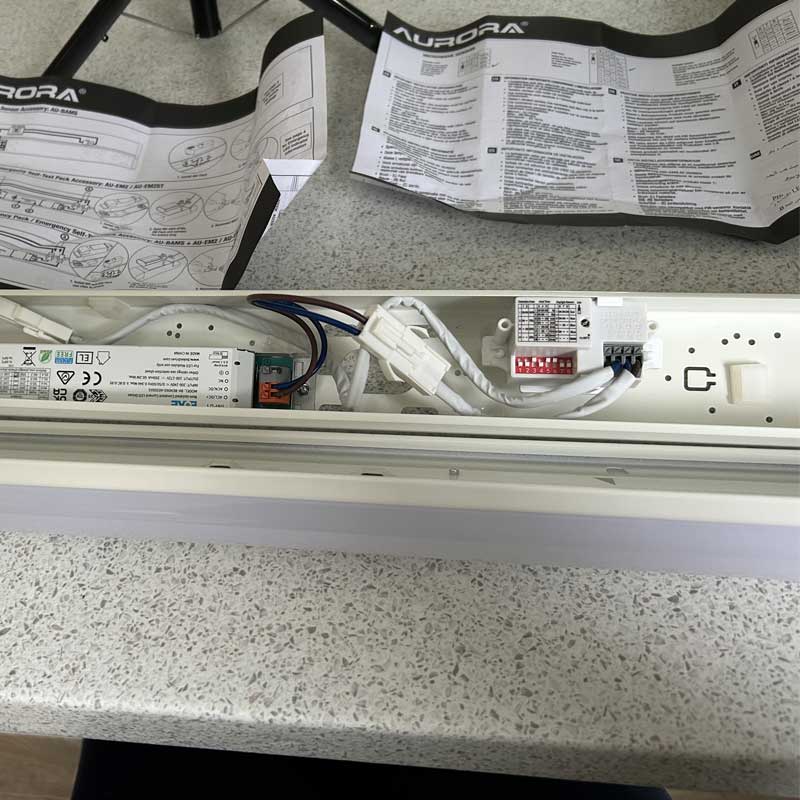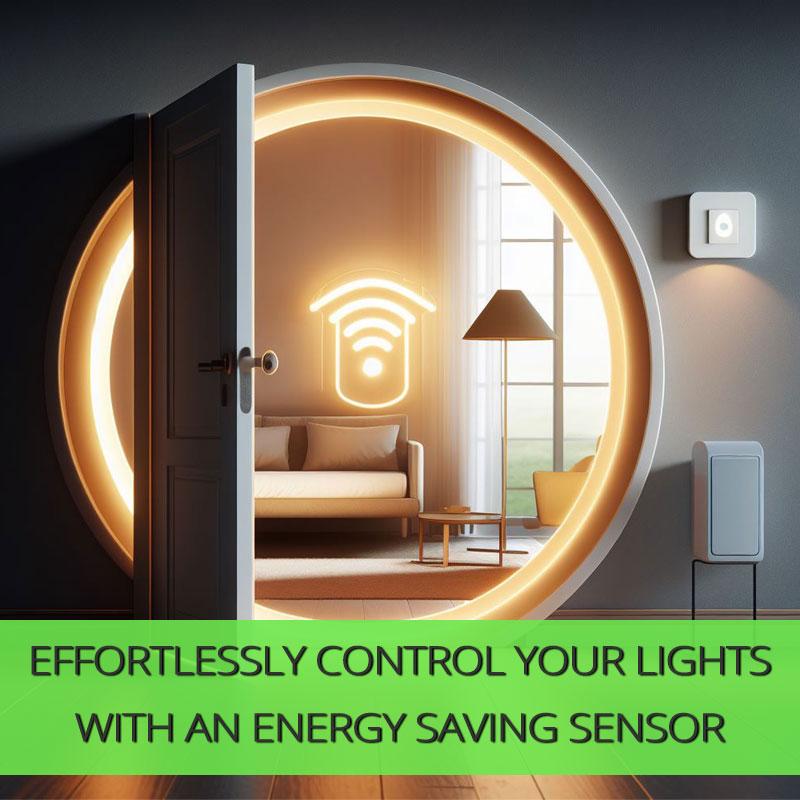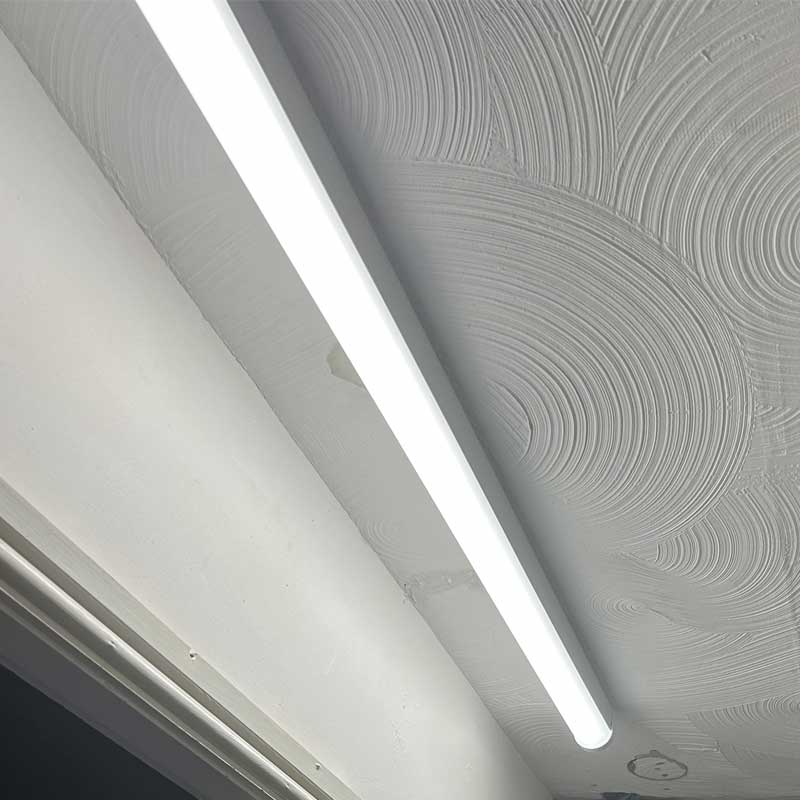Effortlessly Control your Lights with an Energy Saving Sensor
Light switch sensors make it possible to have a convenient and energy-efficient lighting solution that automatically turns on the lights when you enter an area, as well as turn them off once you leave. In this post, we’ll explain the different types of light switch sensors available, what factors need consideration while choosing one for your home or office, and how to install & troubleshoot such units. Ultimately allowing users more control over their interior lighting with cost efficiency in mind.
Key Takeaways
- Light switch sensors use various technologies to detect changes in light intensity or body heat for automated lighting control.
- When selecting a light switch sensor, consider factors such as measurement range, accuracy and environmental influence for optimal coverage.
- Light switch sensors can provide energy savings & promote sustainability by reducing energy consumption & carbon footprint.
Understanding Light Switch Sensors

Light switch sensors, such as motion detectors, are operated by sensing changes in either light intensity or body heat signatures to toggle the lights automatically. We offer a wide selection of these kinds of energy saving sensors including PIR (Passive Infra-red) motion sensors, microwave sensors and photocell sensors which are mainly for outdoor use.
The Lightwave smart sensor shown in the image above is connected wirelessly to a Lightwave smart switch that is positioned on the wall. When the sensor is activated or deactivated it sends a signal to the smart switch which switches the lights on or off. Changes in the settings for times and lux levels are made in the Lightwave App, it can also be used to control multiple lights at the same time.
This Lightwave example can be combined with manual switching or smartphone control to allow you to fine tune your lighting ambiance whenever it suits you. It's battery powered and can be positioned anywhere with no additional wiring requirements.
How do light switch sensors work?
Light switch sensors have the ability to detect infrared heat signals emitted by individuals or pets, they detect changes in motion and body heat. They will automatically turn off after an established period of time if no activity is detected. If you're sick of the kids leaving the lights on and wasting energy, a light switch sensor will cure this problem.
Types of light switch sensors
Light switch sensors are a great way to conserve energy and achieve automated lighting control in your home or workplace. With these devices, you can detect the presence of moving heat sources such as people, which enable light switches to operate accordingly. There are an array of different types available depending on what kind of functionality one requires. A PIR sensor is wall or ceiling mounted, while a microwave sensor is usually fitted with the light fitting itself.
Microwave or PIR Sensor, which One is the Best?
Microwave sensors, another type of sensor, they work by emitting microwave pulses and then measuring the reflection of the returning signals off a moving object. This allows them to cover a larger area compared to PIR sensors and they can even detect movement through walls or glass, providing a more comprehensive detection range.
However, due to their extensive range, microwave sensors can sometimes lead to false alarms, as they may pick up movement outside the intended detection area. This can be mitigated by correctly positioning the sensor and adjusting its sensitivity settings. Despite this, microwave sensors are highly reliable and are especially useful in larger spaces where the use of PIR sensors may not be sufficient.
Many integrated LED light fittings can be purchased with a built-in microwave sensor, or you can order one as additional item that can be easily connected. The Aurora BatPacCWS LED batten for example has an optional plug & play microwave sensor, which is product code: AU-BAMS.

Once fitted into the LED batten, you've got an even more energy efficient light fitting that can switch itself on and off. The sensor has settings for lux, time and distance which you can set and test as you're installing it. You may need to blank off your existing light switch as its no longer needed. Now those pesky kids will never leave this particular light on again as its fully automatic!
These universal LED batten fittings from Aurora also feature a colour temperature adjustable switch with 3 colour choices in 1 and a wattage switch with 2 output modes. Now you can choose which colour temperature and brightness you want while you're installing it or change it whenever you like!
Choosing the Right Light Switch Sensor for Your Needs
When selecting the most appropriate light switch and sensor for your needs, several factors should be taken into consideration. Factors like room size are key in determining what type of sensors to use as it dictates its reach within a given area. Assessing the range of each particular sensor will make sure that you can cover all desired areas accordingly with accuracy. Always ensure that installation requirements are compatible with existing wiring setup before making any purchase decisions on your chosen switch or device sensors.
Placement matters when considering how effective these sensor switches may turn out to function. If you only want them to switch on when its dark, then ensure they're positioned near to a window. Most sensors have a lux setting which allows you to make further energy savings as they won't activate when there's sufficient daylight.
Room size and sensor range
When choosing a light switch sensor, various factors need to be taken into account: the measurement range of the device, its accuracy and response time, as well as any environmental influences. A good rule of thumb when it comes to motion-detecting sensors is that they typically have an average coverage area ranging from 1 - 6 meters. You need to consider the detection range of the sensor, or consider installing multiple sensors or fittings with integrated microwave or PIR sensors.
Corridor Sensors
Corridors and walkways are the ideal room type for presence detected lighting. Especially if they're used less frequently as its likely that the lights will get left on constantly. We can offer a selection of LED light fittings such as battens that have sensors that have a specific detection range for corridors.
Photocell sensors
A photocell sensor works differently to a PIR sensor as it operates on lux levels. More commonly used outdoors, they can ensure that light fittings only come on when its dark and switch themselves off when the sun comes up. You can even get LED light bulbs with a built-in photocell sensor shown below:
Recessed PIR Sensors
Installing a PIR sensor is certainly a great way to save energy, but you don't always want an unsightly sensor sitting in your room. The Kosnic Mauna shown below is a recessed PIR sensor that looks like a downlight. Its also fire rated & IP65 rated for bathroom use, it comes with a white bezel as standard and has other bezels available in a selection of finishes including antique brass, satin chrome and more, allowing you to match them with other recessed downlights in the same room.
Or the new Collingwood H2 Sense downlight, which is a downlight and PIR sensor in one. It has a a colour temperature adjustable switch with 3 colour temperatures in 1. Bezels must be ordered separately which are available in PIR and non PIR versions. The PIR version comes with a hole that the sensor protrudes from and the non PIR bezel hides the sensor, allow you to use it as an ordinary downlight without utilising its sensing capabilities. It can then be used as a perfect match downlight for the sensor version in the same room.
This clever new innovation is also fire rated and IP65 rated meaning you can install it pretty much anywhere. It also has a switched live out, so you can connect other lights to it.
Energy Savings and Eco-Friendly Benefits of Light Switch Sensors
Light switch sensors can play a part in creating an environment that is more sustainable and environmentally friendly. Through motion detection, these sensors are able to identify when lights should be switched off, which results in less electricity being used up. Thus reducing both the bills as well as overall energy demand.
Reducing energy consumption
Light switch sensors can contribute to reducing energy consumption significantly - from 10% up to 90%. These motion sensors are able not only to diminish the chance of mistakenly leaving lights on, but also cut down both energy use and carbon emissions. As a result, they support achieving greater sustainability in an environment.
Contributing to a greener environment
Installing light switch sensors offers many benefits, such as decreased electricity costs and improved energy efficiency. Motion detectors for lighting can help reduce monthly power consumption by up to 40%, compared to manual switching. Not only does this save on your energy bill but also has a positive impact on the environment: lower amounts of carbon footprint are generated thanks to preventing lights from being left running unnecessarily with these clever devices in place. Light switch sensors make it easier than ever before to live sustainably while still enjoying comfortable illumination when entering any room.
Summary
To sum up, light switch sensors provide a convenient and energy efficient solution for lighting in residential or commercial spaces. It is vital to recognise the different types of sensing devices available on the market as well as their features to ensure you select the best type that meets your needs while promoting conservation efforts. It’s important to adequately install them correctly and attend to any troubleshooting promptly so that they can perform optimally and help to extended the life span of the light fittings or light bulbs that they're switching.
Make this move towards more ecological illumination options by using light switch sensors. Enjoy user friendliness along with savings from decreased electricity bills! Let us make changes now for betterment of our planet’s future through responsible use of these automatic, presence detecting switches.
Frequently Asked Questions
Can I replace a light switch with a PIR sensor?
Replacing a light switch with a PIR sensor can help save energy by keeping the lights off when no movement is detected in an area. The motion activated device will reset the time period whenever there is activity, thus allowing for continued operation of lighting fixtures and other electrical equipment such as extractor fans if required.
What is light switch sensor?
A sensor that operates a light switch is an excellent way to save energy and provide convenience, with its ability to activate the lights based on detection of motion or presence. This automated switch can turn both lamps and lighting fixtures on or off whenever necessary.
How does a light switch motion sensor work?
Motion sensor lights are equipped with multiple sensors that detect motion and turn on automatically when triggered. These can be adjusted for desired sensitivity, allowing them to know precisely when a person has left the room before they switch off again.
Why does my motion sensor light switch keep coming on?
It appears that the motion light is perpetually on because the time duration of it has been set to an excessive length, or possibly due to a malfunction leading it stuck in auto-on mode. Check the manufacturers instructions and try some trouble shooting before replacing the device.
What does PIR mean on a light switch?
A passive infrared (PIR) sensor is an electronic device that can be used to detect whether there is someone present in a certain area or not. This technology, often combined with lighting systems, enables switching of the lights on and off when needed.











